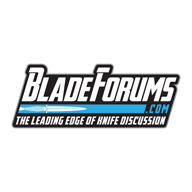O-1 has been my go to fine cutting/abrasion resistant steel for over 25 years now. It is not as forgiving in the forge as 10xx series. It will not tolerate severe overheating and cannot be cooled directly from high forging temperatures to room temp, that is when the majority of cracking occurs. You can use high forging heats but you need to know when. "When" is when you will be moving large amounts of metal and also be hammering, and moving, as the temperature drops to lower forging temperatures before a reheat. If you go to the high range and just tap it a few times while allowing it to cool to room temp it will probably crack on you. As you progress you will use progressively lower heats until you are normalizing. normalizing should be followed immediately by refinement cycles, i.e. as soon as the magnet sticks again around 750°F. Refinement should be followed immediately by spheroidizing.
The problem is in the grain size; it needs to be small before allowing the steel to cool to room temperature. With its deeper hardenability, combined with an enlarged grain size, the steel is capable of self destructing as it cools. You need to overcome this by controlling the grain size before it does cool. Annealing has to be spheroidal in nature, tradition or lammelar anneals will not work well. I believe much of this steels red short reputation is undeserved. Red short implies that the steel comes apart at high forging temperatures, and I have welded hundreds, and hundreds of pounds of O-1 into Damascus with no red short behavior, with the exception of one bad bar, full of pipe and inclusions. The cracking, or crazing, issues have always came about when cooled from high heat.

